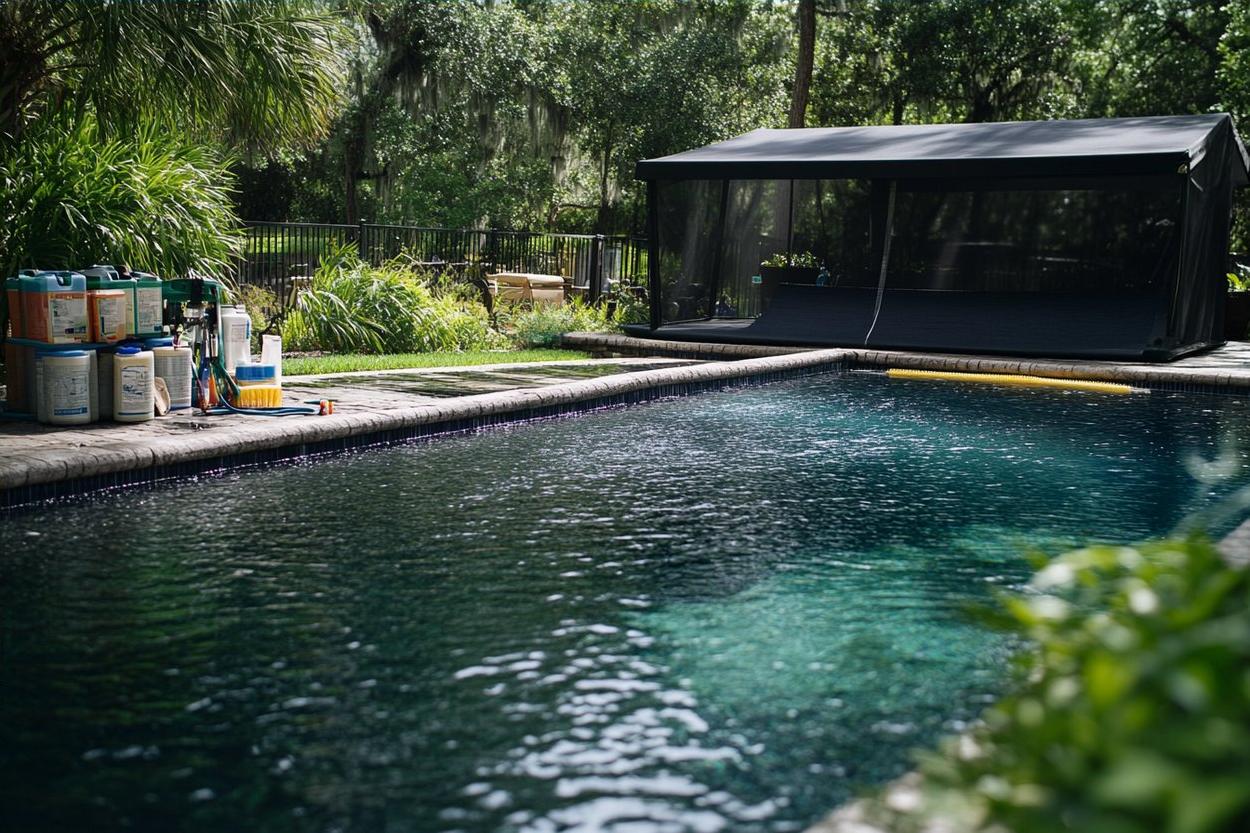Garden Swimming Pools: Design, Materials, Lighting and Seasonal Maintenance
Garden swimming pools represent an excellent way to enhance outdoor living spaces while providing a refreshing retreat during warm weather. Whether you have a compact urban backyard or a more spacious garden, incorporating a swimming pool can transform your outdoor area into a personal oasis. With thoughtful planning and design, even those with limited space can enjoy the luxury and benefits of a garden pool. This article explores key considerations for designing, constructing, illuminating, and maintaining garden swimming pools, with special attention to small-space solutions.

How to Design a Garden Swimming Pool for Small Spaces
Designing a swimming pool for a compact garden requires careful planning and creative thinking. The first step is accurately measuring your available space, accounting for safety borders and access paths around the pool. For small gardens, consider these space-optimizing designs:
Plunge pools offer depth rather than length, perfect for cooling off without requiring extensive garden real estate. Typically measuring 2-3 meters across, these compact options still provide the enjoyment of water immersion while fitting into limited spaces.
Lap pools present another solution, featuring a narrow, elongated design that can follow the contours of your garden. At just 2-3 meters wide but potentially 10+ meters long, these pools maximize swimming functionality while minimizing width requirements.
Freeform or kidney-shaped designs can work exceptionally well in awkward garden layouts, as their organic forms can be customized to fit available spaces. Consider also corner installations, which utilize often underused garden areas.
For extremely limited spaces, swim spas combine the features of a small pool with jetstream technology that allows swimming against a current, effectively providing the workout benefits of a much larger pool in a fraction of the space.
How to Choose the Right Materials for a Garden Swimming Pool
Material selection significantly impacts your pool’s appearance, durability, performance, and maintenance requirements. The primary options include:
Concrete and gunite pools offer unparalleled customization potential, allowing for bespoke shapes and designs tailored to your specific garden layout. While requiring professional installation and relatively higher upfront costs, these materials provide exceptional durability and longevity, potentially lasting decades with proper maintenance.
Fiberglass pools come as pre-formed shells, limiting shape options but offering rapid installation and lower long-term maintenance. Their smooth, non-porous surface inhibits algae growth and requires fewer chemicals than other pool types.
Vinyl-lined pools strike a balance between affordability and customization. The flexible liner can adapt to various shapes and sizes, though it typically requires replacement every 7-10 years.
For small gardens, above-ground pools with composite or steel walls present a cost-effective solution requiring minimal groundwork. Modern designs have significantly improved aesthetically and can be partially sunk into the ground for a semi-inground appearance.
When choosing materials, consider your local climate. In regions with freeze-thaw cycles, concrete pools with proper reinforcement typically perform best, while fiberglass offers excellent heat retention properties for cooler climates.
Garden Swimming Pool Lighting Ideas for Evening Use
Strategic lighting transforms a garden pool from a daytime-only feature into a captivating evening focal point while enhancing safety and usability. The primary lighting options include:
Underwater LED lights create dramatic effects by illuminating the water from within. Available in various colors, these fixtures can be programmed to maintain a consistent hue or cycle through different colors for dynamic visual appeal. For small pools, 2-4 underwater lights typically provide sufficient illumination.
Perimeter lighting installed along pool edges enhances safety by clearly marking boundaries while contributing to the overall ambiance. Options include recessed deck lights, which sit flush with surrounding surfaces, and strip lighting that can be concealed under coping or in nearby landscaping.
For garden integration, consider pathway lights leading to the pool area, uplighting on nearby trees or structures, and accent lighting on water features or plantings. Solar-powered options reduce energy consumption, though they typically provide less intense illumination than wired alternatives.
Smart lighting systems allow control of brightness, color, and timing from mobile devices, enabling the creation of different moods and scenarios for various occasions. For evening entertaining, combine warm white perimeter lighting with subtle blue underwater illumination for a sophisticated look.
Seasonal Care Tips for Your Garden Swimming Pool
Proper seasonal maintenance ensures your garden pool remains in optimal condition year-round while extending its lifespan and reducing long-term costs.
Spring preparation involves removing and cleaning winter covers, inspecting the pool structure for winter damage, checking and rebalancing water chemistry, and inspecting pumps and filtration systems before regular use resumes. This is also an ideal time to assess and repair any surrounding landscaping affected by winter conditions.
Summer maintenance focuses on regular cleaning (skimming, vacuuming), monitoring water chemistry 2-3 times weekly, maintaining filtration systems, and preventing algae growth through proper chemical treatment. For small pools, portable vacuum systems are typically sufficient for regular cleaning.
Fall care should include more frequent debris removal as leaves fall, gradual reduction in chemical treatments as usage decreases, and preparation for potential temperature drops by maintaining proper water levels to prevent structural damage.
Winter protection varies by climate. In mild regions, reduced maintenance may suffice, while colder areas require proper winterization—including partially draining water, adding winterizing chemicals, protecting plumbing from freezing, and installing a secure pool cover. For small garden pools, specialized winter covers designed for compact spaces provide protection without excessive overhang.
Year-round, regardless of season, maintain proper water chemistry, promptly address any equipment issues, and keep the surrounding garden area well-maintained to prevent debris from entering the pool.
By carefully considering design options for small spaces, selecting appropriate materials, planning effective lighting, and implementing consistent seasonal maintenance, even modest gardens can successfully incorporate swimming pools that provide enjoyment throughout the year.




